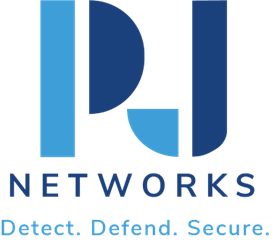Fortinet Rugged Firewalls: Securing Our Critical Infrastructure
Introduction
Let’s make one thing clear — critical infrastructure security is not optional. It’s not just another thing to tick off. We’re talking about power grids, water treatment plants, financial institutions, and telecommunications — the systems that make modern life run. And still, I occasionally come across organizations running old firewalls or worse that solely depend on perimeter security (major no-no).
I’ve been in this business long enough to know what happens when you get sloppy. I was knee-deep in networking in the ’90s — in a time when connecting systems was a bigger deal than locking them down. Then there was the Slammer worm in 2003, which tore across networks so fast that it knocked out A.T.M.s and hospitals in minutes. That was a wake-up call.
Fast forward to today, and threats have evolved to targets including operational technology (OT), industrial control systems (ICS), and IoT devices. A misconfigured firewall in a SCADA network or a system that is open to an attack can be the death knell. That’s what makes Fortinet’s rugged firewalls my weapon of choice when it comes to critical infrastructure security.
Critical Infrastructure Risks
The thing is, critical systems were not built with security in mind. Most were designed decades ago, before threats like ransomware, APTs, or supply chain attacks existed. What are we dealing with?
- An outdated protocol running on a legacy system that never should have been exposed to the internet.
- Zero-day vulnerabilities (OT vendors are not known for speedy patching cycles)
- Insider threats (both intentional and accidental) It’s not always hackers, sometimes it’s just a technician shoving in an infected USB.
- Nation-state attacks—yes, these are going on and will go on.
- Remote access exploits — because remote monitoring is a thing now, and security has not kept pace.
I have personally witnessed banks’ networks burning down because they didn’t segment them properly, and malware spread like fire through their customers’ databases into their internal admin systems. There’s a reason I helped three financial institutions implement zero-trust security just a few months ago: You simply can’t take for granted that attackers aren’t already in your network.
Fortinet Solutions
So why Fortinet? Because in critical infrastructure, your take a licking and keep on ticking firewalls are both from cyber threats and the actual physical environment. If you’ve ever visited a data center in a power plant, you know enterprise standard gear won’t work. So, why Fortinet rugged firewalls?
- Designed for OT environments—so they operate in extreme temperatures, high humidity, and ruggedized conditions.
- Deep packet inspection (DPI) for industrial traffic — because Modbus, DNP3, and BACnet aren’t known for coming out of the box and being secure.
- Zero-trust network segmentation — to help ensure that critical systems are isolated from IT networks.
- AI-powered threat intelligence—and yes, I am usually cynical about the AI-powered label, but FortiGuard’s real-time updates really work.
- Security fabric, an integration of firewalls, endpoint protection, and security monitoring into a single pane of glass.
Not Marketing Claims, Real-World Reliability
I have used FortiGate Rugged series firewalls in demanding environments:
- Banking: Where downtime costs millions an hour. Fortinet firewalls build a segmented zero-trust model to prevent lateral movement of threats.
- Manufacturing plants: With legacy ICS that couldn’t be patched — Fortinet’s segmentation protected them while allowing important traffic.
- Telecom infrastructure: Generally, these are attacks like the one on core routing systems, a constant but usually not very important concern. Fortinet’s ability to see into encrypted traffic made a difference in practice.
And the best part? These firewalls sport industrial-grade hardware protections—not only fanless designs and hardened casings but also support for redundant power supplies. No wobbly enterprise hardware that melts under stress.
Quick Take
For those short on time, here’s what you need to know:
- Rugged defense systems are a requirement for critical infrastructure—an IT-grade firewall wouldn’t last long in OT settings.
- Fortinet’s Rugged Firewalls defend against physical and cyber threats — from extreme heat to nation-state hacking attempts.
- Zero-trust is table stakes — being inside your network is not equivalent to being trusted.
- DPI for OT protocols is a necessity in industrial security—legacy protocols weren’t designed for security.
Conclusion
Look, I’m not new to cybersecurity. I’ve messed up. I have misconfigured firewalls. I’ve depended on outmoded perimeter security, when I shouldn’t have. And I know this, and I’ve learned the hard way. The truth is, our critical infrastructure is under attack—even so, attackers don’t care if your systems were built in the 1980s. They’ll find a way in. It is precisely why, sticking to legacy security practices is a disaster in the making.
Fortinet rugged firewalls deliver an additional layer of dependable security that’s tested and proven in the real world in environments where failure is not an option. If you’re still running legacy security in a critical infrastructure setting, now is the time to fix that before it’s too late. Because here’s the thing — you cannot afford to get this wrong.
